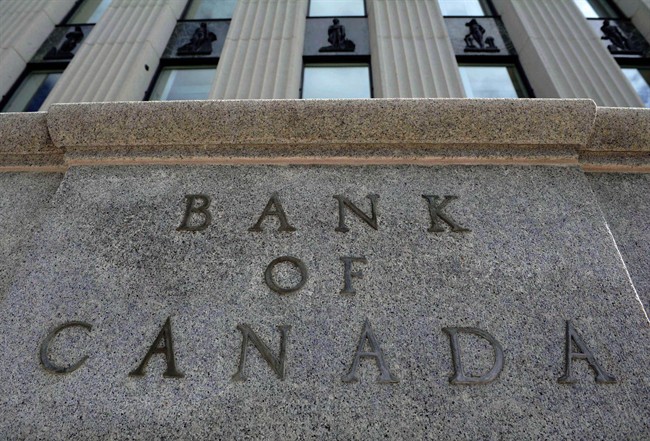OTTAWA – The Bank of Canada is widely expected to stand pat on interest rates at its announcement Wednesday, but economists will be watching closely to see how it characterizes recent improvements in the economy.

Signs of a revival in the Canadian labour market have appeared in the data since the central bank’s last policy rate announcement in October. Fresh figures have also pointed to a faster than anticipated growth in both inflation and the gross domestic product.
Increased demand for Canadian exports from the recovering U.S. economy has provided some of the boost.
But even with all those positive signs, Dawn Desjardins of RBC Economics expects the central bank to keep its trend-setting rate locked in at one per cent.
Desjardins added that Bank of Canada governor Stephen Poloz could highlight the continued lack of business investment as a reason to stay put.
“They haven’t really given us a sense that they’re going to be moving that policy rate any time soon,” said Desjardins, RBC’s assistant chief economist.
Many analysts, including Desjardins, expect the Bank of Canada to maintain its one per cent rate until at least the middle of 2015. It hasn’t budged since September 2010, something that has kept borrowing rates at historic lows.
In its October announcement, the central bank described underlying inflationary pressures “muted.”
Since then, the unemployment rate has dipped to 6.5 per cent and the pace of GDP growth climbed to 2.8 per cent in the third quarter – half-a-percentage-point higher than the bank anticipated.
“Generally, some fairly good news,” said Randall Bartlett of TD Economics.
Oil prices, however, have continued to decline since then, Bartlett noted.
In October, Poloz warned if the low oil prices lingered at depressed levels they could cut the growth of Canada’s gross domestic product by a quarter-point next year.
After making those remarks to the Senate banking committee, Poloz noted the bank had used a price of US$85 a barrel to produce its estimate. Since then, the price of oil has fallen even further, closing Tuesday at under US$67.
David Madani of Capital Economics said he thinks the bank will have to acknowledge Wednesday that GDP and employment figures have shown slightly higher than expected improvements.
“But at the same time, I think it (the bank) will sort of offset that with oil prices,” Madani said.
“I think the Bank of Canada will put more emphasis on the recent declines in oil prices being a potential threat to the longer-term economic outlook – for both economic growth and inflation.”
Analysts, however, will have to wait for a full report on the bank’s expectations for the economy and inflation until January, when it releases its next monetary policy report. That document will include risks to the outlook.

Comments